PRAISE FOR GEORGE ELLISONS PERMANENT CAMPWhat an occasion the publication of Permanent Camp marks! Inveterate naturalist and student of the southern Appalachians, George Ellison returns to his roots as a poet after having compiled an impressive array of prose works. As with many of his previous titles, such as Blue Ridge Nature Journal and Mountain Passages, Permanent Camp is made visually stunning by the accompanying watercolors and pen-and-ink washes of Georges wife, Elizabeth. The poems included in this collection range from crystaline haiku to longer narrative pieces that spring from epigraphs as thoughtful responses to the works of other writers who have also roamed and loved these mountains. Chris WilcoxOwner-operator, City Lights BookstoreSylva, North CarolinaIf there is anyone who understands the idea of a permanent camp, it is George Ellison. As someone who has not only talked the talk (through his involvement over a lifetime with the work of Horace Kephart and James Mooney), he has more than walked the walkhaving lived for the better part of forty years in what amounts to a permanent camp with his artist wife Elizabeth in the back woods along a roaring creek in Swain County, North Carolina. While journalistic prose and ethno-botany have been his bread and butter all these years, it has been poetry that was at the center and heart of his work.
And now, finally, with the publication of this book, we are privy to the force that through the green fuse drives the flower, as Dylan Thomas referred to his poetic muse. It does ones heart good to finally see George Ellison at his eclogic and rhapsodic best. Thomas Rain CroweAuthor of Zoros Field: My Life in the Appalachian Woods George Ellisons Permanent Camp reawakens my sense of being alive here in these mountains, these ancient Unakas that Ellison has observed and listened to for as long as he has dwelled among them. For several decades, he and his wife, Elizabeth, have lived profoundly close to the rhythms of this place, and now they have brought together their words and images to reaffirm their participationBy turns lyrical, haunted, witty and even deliberately matter-of-fact in its presentation, Ellisons work opens up one mans life as interwoven with its landscape and its stories, its dream-time, its ongoing vitality and its transformative power. Kathryn Stripling ByerPoet Laureate Emeritas of North CarolinaIn this beautiful collection of writings and paintings, George Ellison has thoughtfully placed his own poems and personal narratives in the company of words spoken by his kindred spirits. Musing around his permanent campfire with Han Shan, Petrarch, William Barnes and Cherokee elders, George has rendered their words, originally from diverse languages, into English, interpreting his own deepest understanding of them.
His renderings, translating the essence of his friends wisdom, give off veritable sparks of elective affinities in the conversation around the campfire. The marriage of Elizabeths paintings and Georges words share with the reader the deep-hearted love they have for each other and for the spacious world they inhabit. Nan WatkinsTranslator of Yvan Golls Dreamweed and 10,000 Dawns 

 Published by The Natural History Press A Division of The History Press Charleston, SC 29403 www.historypress.net Copyright 2012 by George Ellison All rights reserved Cover artwork by Elizabeth Ellison www.elizabethellisonwatercolors.com Front: The Old Place, In a High Meadow and (inset) Flight of Swallows Frontispiece map excerpted from Railroad Map of North Carolina, 1900, Examined and Authorized by the North Carolina Corporation Commission. Courtesy of Special Collections, Hunter Library, Western Carolina University, Cullowhee, North Carolina. First published 2012 e-book edition 2013 Manufactured in the United States ISBN 978.1.62584.082.0 Library of Congress CIP data applied for. print edition ISBN 978.1.60949.685.2 Notice: The information in this book is true and complete to the best of our knowledge.
Published by The Natural History Press A Division of The History Press Charleston, SC 29403 www.historypress.net Copyright 2012 by George Ellison All rights reserved Cover artwork by Elizabeth Ellison www.elizabethellisonwatercolors.com Front: The Old Place, In a High Meadow and (inset) Flight of Swallows Frontispiece map excerpted from Railroad Map of North Carolina, 1900, Examined and Authorized by the North Carolina Corporation Commission. Courtesy of Special Collections, Hunter Library, Western Carolina University, Cullowhee, North Carolina. First published 2012 e-book edition 2013 Manufactured in the United States ISBN 978.1.62584.082.0 Library of Congress CIP data applied for. print edition ISBN 978.1.60949.685.2 Notice: The information in this book is true and complete to the best of our knowledge.
It is offered without guarantee on the part of the author or The History Press. The author and The History Press disclaim all liability in connection with the use of this book. All rights reserved. No part of this book may be reproduced or transmitted in any form whatsoever without prior written permission from the publisher except in the case of brief quotations embodied in critical articles and reviews. * For our childrenMilissa, Quintin and GeorgeWho also lived a portion of this dream * As I walked through the wilderness of this worldI lighted on a certain place & I laid me down in thatPlace to sleep & as I slept I dreamed a Dream withina dream wherein I saw a ragged Pilgrim carrying hisBurden set forth from the City of Destruction & followthe Shining Light through a Wicket Gate & across theRiver of the Water of Life into the Celestial City. Pilgrim: Is this the way to the Celestial City?Shepherd: You are on your way.Pilgrim: How far is the city thither?Shepherd: Too far for those but get thither.I saw in my inner Dream that when the shepherdsperceived they were wayfarers they put questions tothem: Whence come you? & How got you in the way?& By what means have you so persevered therein?for but few of them that begin to come thither shewtheir faces on this mountainbut when theshepherds heard their answers, being pleasedtherewith, they looked upon them & said, Welcome to the Delectable Mountains.John Bunyan, as rendered from The Pilgrims Progress From This World to That Which Is to Come: Delivered Under the Similitude of a Dream Wherein Is Discovered the Manner of His Setting Out, His Dangerous Journey, and Safe Arrival at the Desired Countrey (Part 1, London 1678) Contents Artwork Specifications ILLUSTRATIONS PAINTINGS A Note to the Reader Perhaps half of these intertwined segments (poems, narratives and renderings) were written during an eight-year period from 1974 to 1982. Pilgrim: Is this the way to the Celestial City?Shepherd: You are on your way.Pilgrim: How far is the city thither?Shepherd: Too far for those but get thither.I saw in my inner Dream that when the shepherdsperceived they were wayfarers they put questions tothem: Whence come you? & How got you in the way?& By what means have you so persevered therein?for but few of them that begin to come thither shewtheir faces on this mountainbut when theshepherds heard their answers, being pleasedtherewith, they looked upon them & said, Welcome to the Delectable Mountains.John Bunyan, as rendered from The Pilgrims Progress From This World to That Which Is to Come: Delivered Under the Similitude of a Dream Wherein Is Discovered the Manner of His Setting Out, His Dangerous Journey, and Safe Arrival at the Desired Countrey (Part 1, London 1678) Contents Artwork Specifications ILLUSTRATIONS PAINTINGS A Note to the Reader Perhaps half of these intertwined segments (poems, narratives and renderings) were written during an eight-year period from 1974 to 1982.
At that time, I edited
Next page
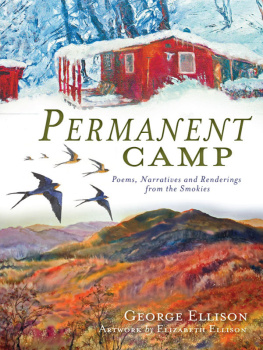
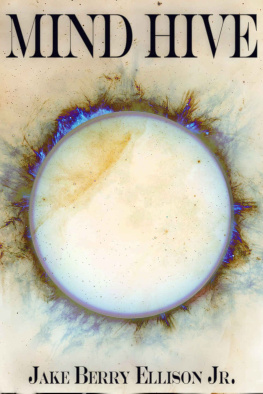


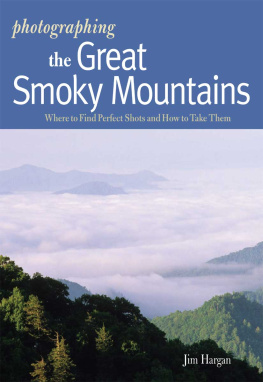
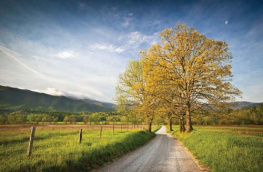
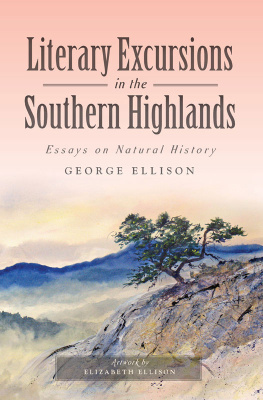
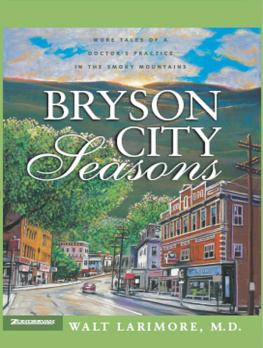
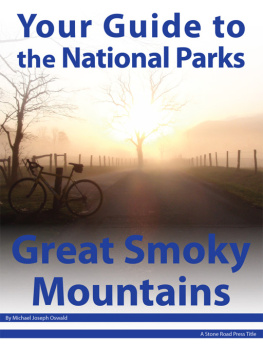






 Published by The Natural History Press A Division of The History Press Charleston, SC 29403 www.historypress.net Copyright 2012 by George Ellison All rights reserved Cover artwork by Elizabeth Ellison www.elizabethellisonwatercolors.com Front: The Old Place, In a High Meadow and (inset) Flight of Swallows Frontispiece map excerpted from Railroad Map of North Carolina, 1900, Examined and Authorized by the North Carolina Corporation Commission. Courtesy of Special Collections, Hunter Library, Western Carolina University, Cullowhee, North Carolina. First published 2012 e-book edition 2013 Manufactured in the United States ISBN 978.1.62584.082.0 Library of Congress CIP data applied for. print edition ISBN 978.1.60949.685.2 Notice: The information in this book is true and complete to the best of our knowledge.
Published by The Natural History Press A Division of The History Press Charleston, SC 29403 www.historypress.net Copyright 2012 by George Ellison All rights reserved Cover artwork by Elizabeth Ellison www.elizabethellisonwatercolors.com Front: The Old Place, In a High Meadow and (inset) Flight of Swallows Frontispiece map excerpted from Railroad Map of North Carolina, 1900, Examined and Authorized by the North Carolina Corporation Commission. Courtesy of Special Collections, Hunter Library, Western Carolina University, Cullowhee, North Carolina. First published 2012 e-book edition 2013 Manufactured in the United States ISBN 978.1.62584.082.0 Library of Congress CIP data applied for. print edition ISBN 978.1.60949.685.2 Notice: The information in this book is true and complete to the best of our knowledge.